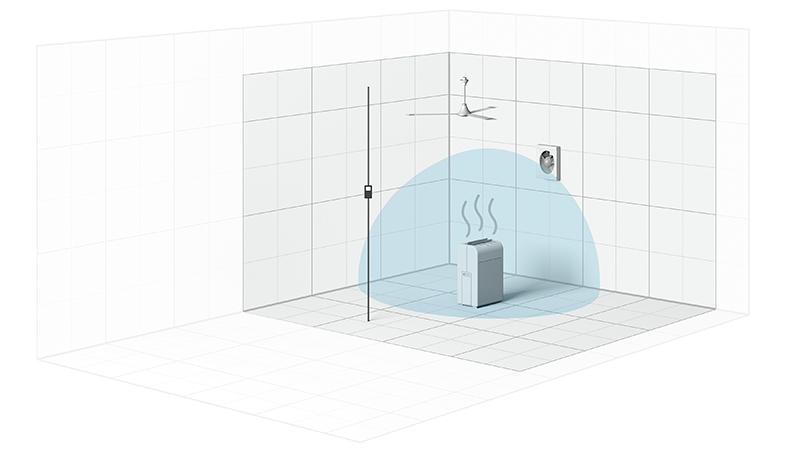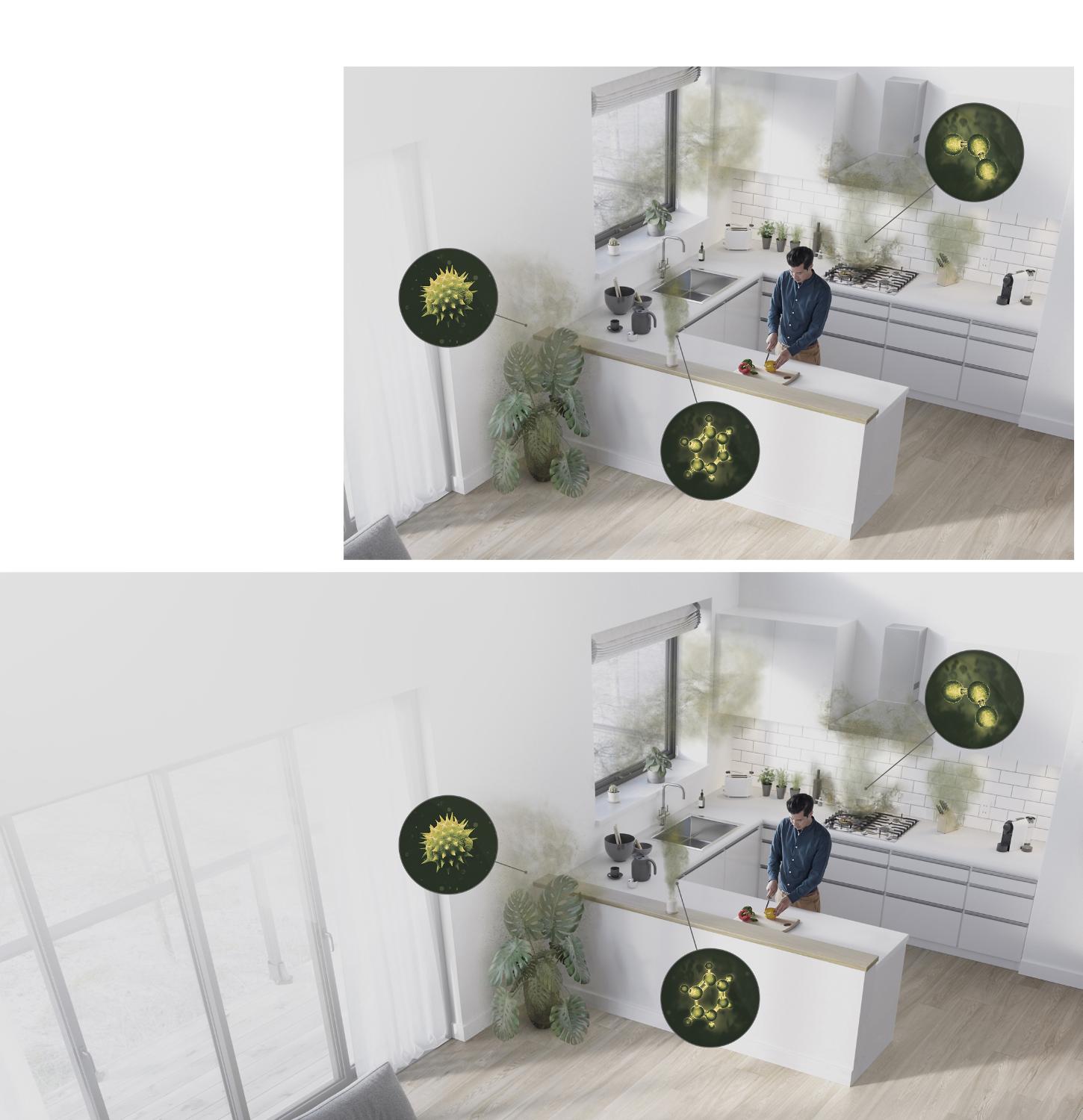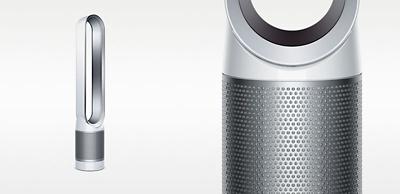

Dyson Purifier Cool™ purifying fan
Captures dust, allergens and bacteria.
Removes 99.95% of ultrafine particles¹
Purifies the whole room²
Fully-sealed to HEPA H13 standard³
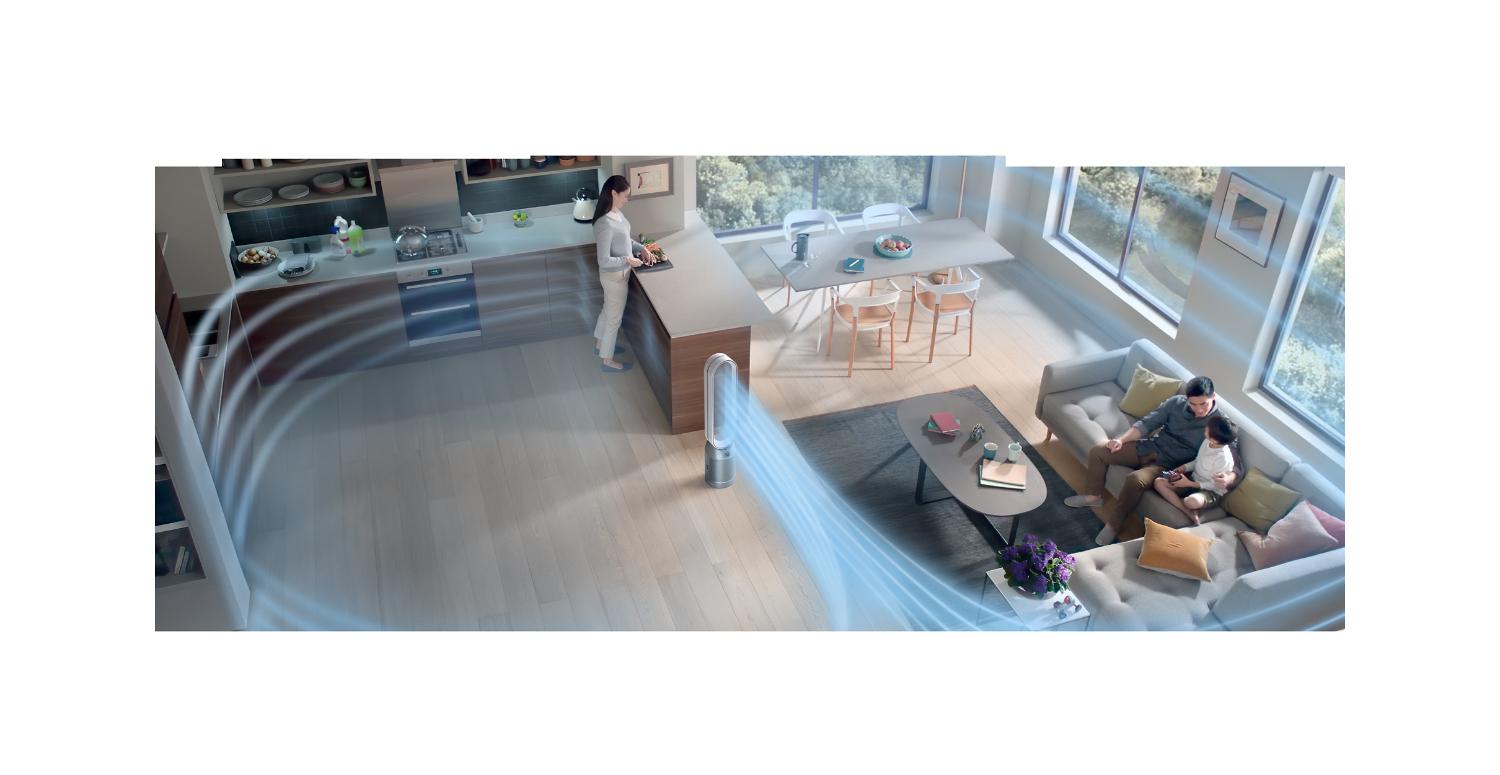
Powerful circulation to purify the whole room
Only Dyson purifiers have Air Multiplier™ technology, to draw in distant pollutants and project purified air throughout the room.²
We test beyond the industry standard. For real living spaces.
Dyson engineers designed the POLAR test to challenge the industry test standard – measuring filtration, sensing and circulation to ensure the whole room is purified properly.
-

CADR is not a measure of purification performance in a real-size room 28.5m³
Two additional fans boost circulation. Only one sensor measures air quality.
-

Dyson's POLAR test goes further to measure purification throughout a real-size room 81m³
No additional fans. Nine different sensors to measure even-room air quality.
-
Pollen and allergens
PM10
-
Bacteria
PM5.0
-
Industrial emissions
PM2.5
-
Ultrafine particles
PM0.1
-
Formaldehyde (HCHO)
Carpets, rugs and flooring
-
Odours
Household fumes and cooking
-
Benzene and VOCs
Cleaning products and candles
-
Nitrogen dioxide
Gas stoves and car exhausts

Senses and reports, automatically
Three sensors constantly analyse your air, while our unique algorithm cross-checks data every second. To precisely monitor, display and react to your air quality.

Captures and destroys with advanced HEPA filtration
The HEPA filter captures 99.95% of particles as small as 0.1 microns.¹ Activated carbon absorbs gases⁴, odours and VOCs.
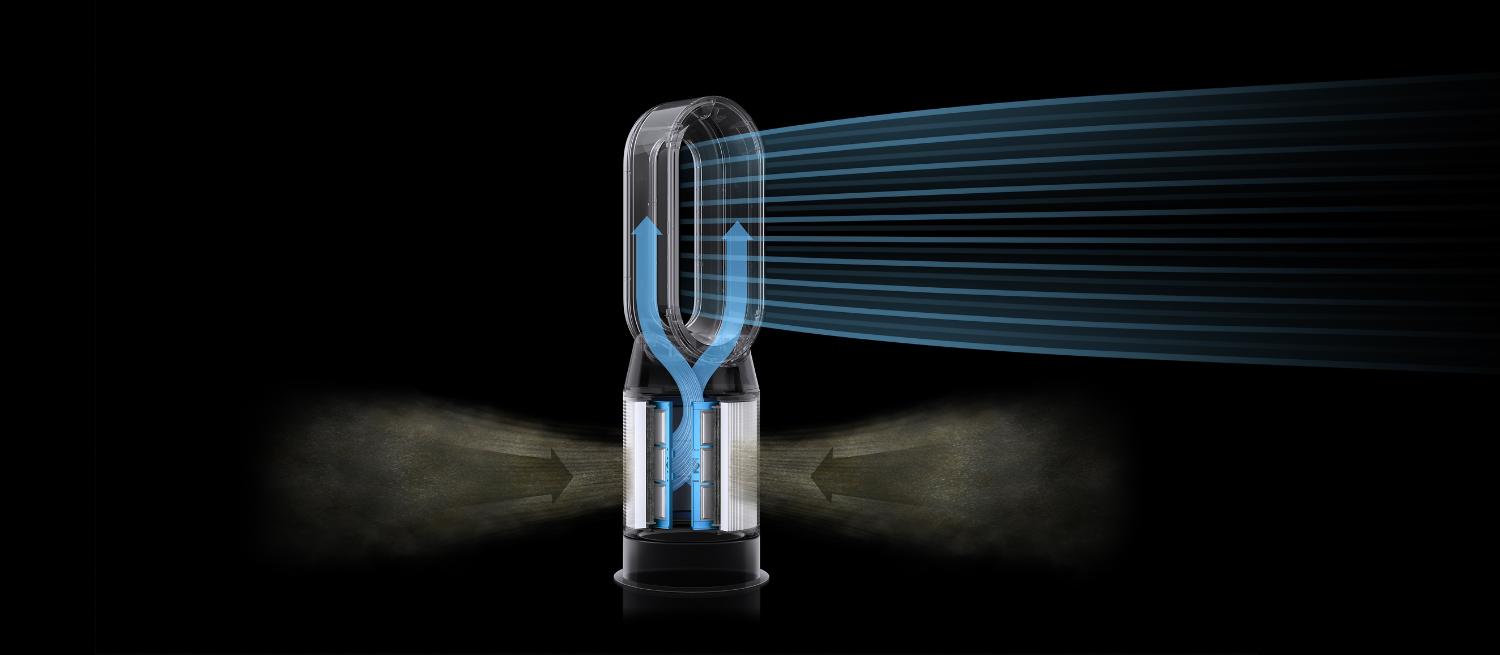
The purifier is fully sealed to HEPA H13
To prevent pollutants leaking back into the air, it's not just the filter that's sealed to HEPA H13 standard, it's the whole purifier. So what goes inside, stays inside.

Smart purification, controlled by app or voice
Control and monitor air quality from anywhere with the Dyson Link app⁶, or hands-free with compatible voice services.⁷
-

Cools you in summer
Projects over 290 litres of air a second for cooling airflow.
-

Diffused mode. Purifies without cooling you.
Airflow is diverted through the back of the machine, maintaining effective purification.
-

Night mode
For lighter sleepers, it monitors and purifies using the quietest settings along with a dimmed display.
-

Easy filter care
Your HEPA+Carbon filter is easy to change and the Dyson Link app⁶ lets you know when it's time.
Choose your model
Filter replacements
Find the right filter for your purifier.
Frequently asked questions
Dyson engineers are perfectionists. Channelling our relentless dissatisfaction, we have re-engineered our latest’s purifiers to be the only purifier fully sealed to HEPA H13 standard. Capturing 99.95% of ultrafine particles and preventing pollutants from leaking back into the air you breathe.
We recommend replacing the HEPA+Carbon filter every 12 months. That's because over time, filters can get clogged with pollutants, and even let unpleasant odours back into the room. The machine will alert you when it’s time to change filters. A filter life reading can be found on the LCD screen and via the Dyson Link app. The catalytic filter never needs replacing.
- 1 Tested for filtration efficiency at 0.1 microns (EN1822, ISO29463). Dyson purifiers were challenged with airborne influenza A (H1N1 virus) and MS2 bacteriophage at an independent lab, using a 30 m3 chamber. After 60 minutes at maximum fan speed, the airborne concentration in the chamber was reduced up to 99.9 %. Real-life efficacy may vary.
- 2 Dyson purifiers were challenged with airborne SARS-CoV-2 (the virus that causes COVID-19) at an independent lab, using a 0.37 m3 chamber for 90 seconds. Dyson Purifiers were also challenged with Phi-6 bacteriophage (a surrogate to test SARS-CoV-2) at an independent lab, using a 30 m3 chamber. After 90 minutes at maximum fan speed, the airborne concentration in the chamber was reduced by 99.9 %. Real-life efficacy may vary.
- 3 Particle challenge by DHES oil specified in EN1822 within a chamber of specified in ATSM F3150. Tested in max mode at IBR US, for w whole machine efficiency above 99.95%.
- 4 Gas capture rates may vary.
- 5 Requires device to run app, Wi-Fi or mobile data, Bluetooth 4.0 support, and iOS version 10 or Android version 5 (or above). Standard data and messaging rates may apply.
- 6 Refer to the Dyson Link App for comptible voice services.


